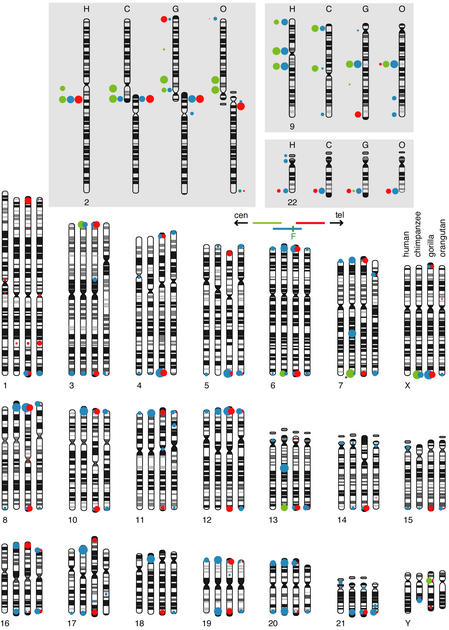Figure 2.
Summary of fluorescence in situ hybridization (FISH) analyses of hominid chromosomes using BACs RP11–480C16 (green), RP11–395L14 (blue), and RP11–432G15 (red) derived from the ancestral fusion site in human 2q13–q14.1. Data for chromosomes 2, 9, and 22, which carry the major blocks of paralogy in human, are shown in the top panels so that the banding patterns are not obscured by the FISH signals. Other chromosomes are shown in the bottom panel. A total of at least six metaphase spreads were examined for each probe in each species (one individual each). Hybridization signals seen at each location were scored from digitized images on an intensity scale of 1–4 on each probe in each species. The cumulative scores were normalized to that of the location with highest cumulative score in each experiment. The area of each dot is proportional to this normalized score. Dots are aligned with the midpoint of observed FISH signals for each location. The asterisk indicates where hybridization was seen on one homolog only. Ideograms are redrawn from Yunis and Prakash (1982). Accession numbers for the three clones are given in Fig. 1. Human 2p- and 2q-specific clones, RP11–90H11 and RP11–47E6, respectively, were used to verify the identity of hominid chromosomes orthologous to 2p and 2q (i.e., chimpanzee 12 and 13, respectively) (not shown).

